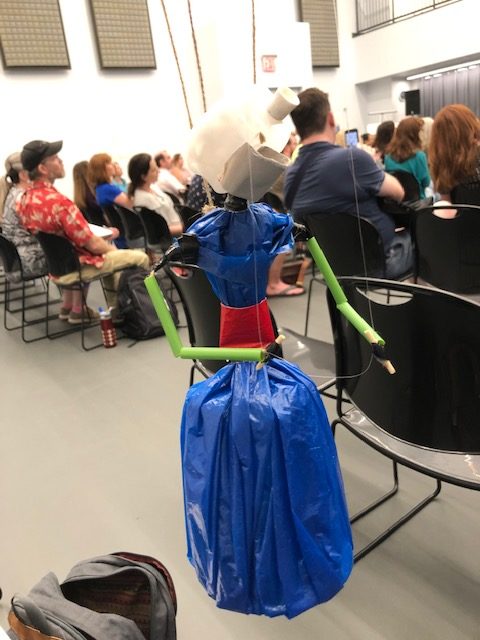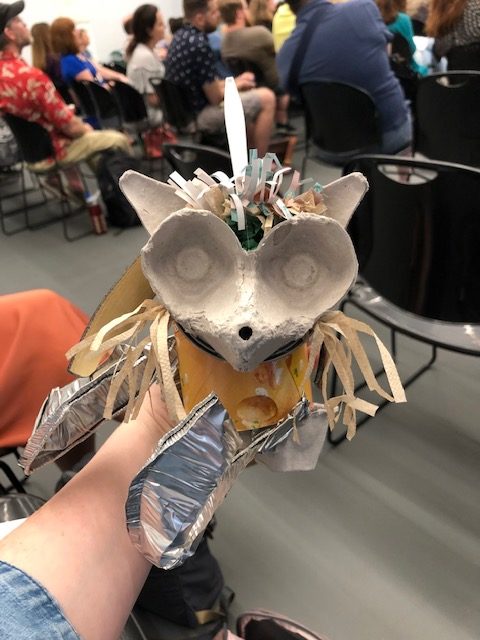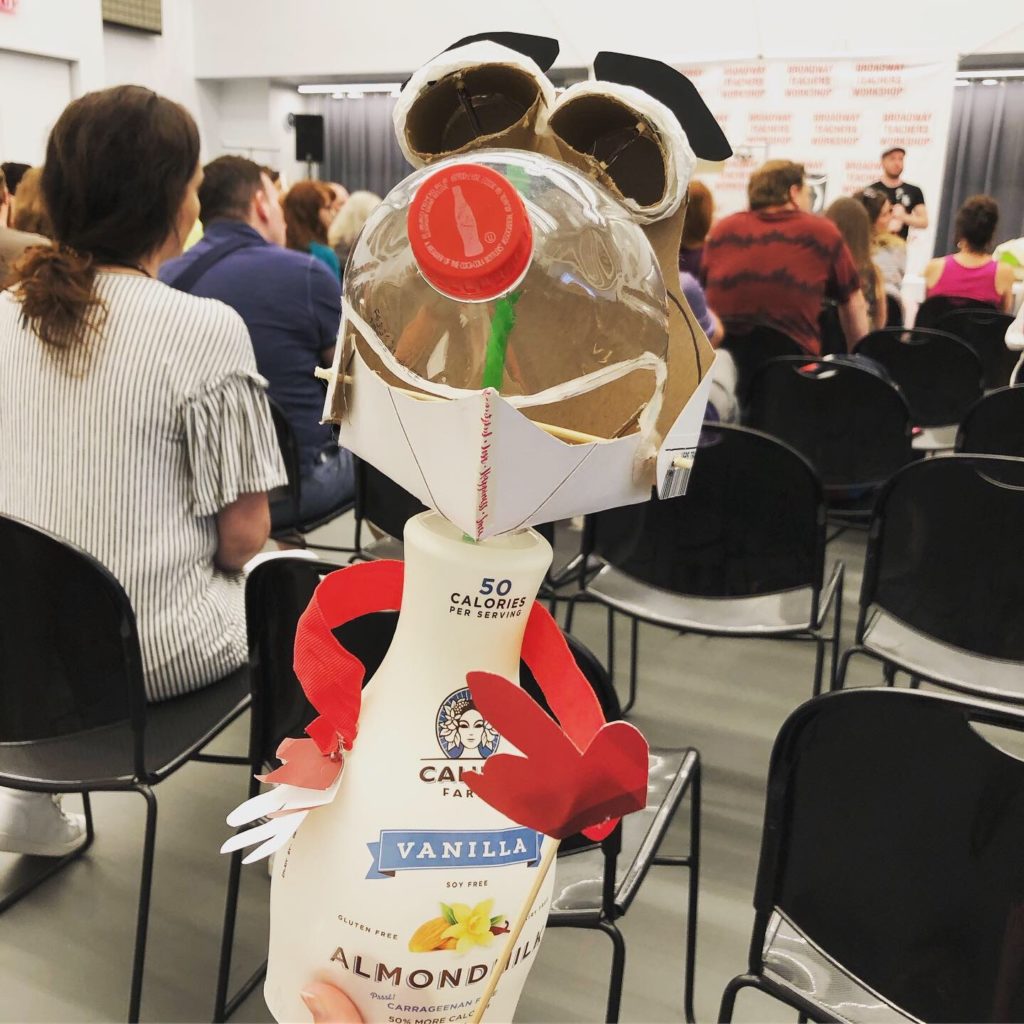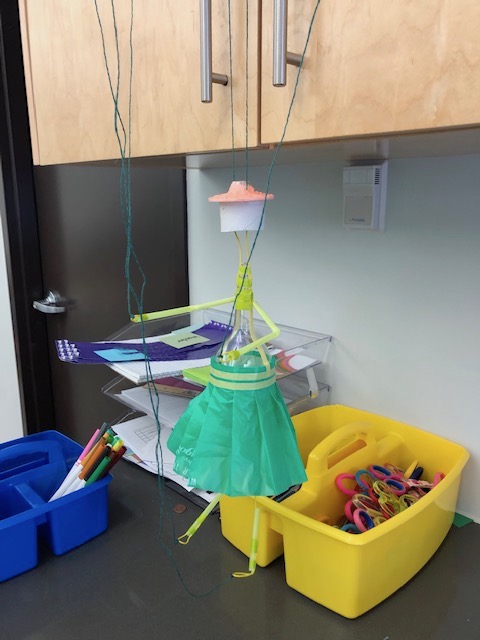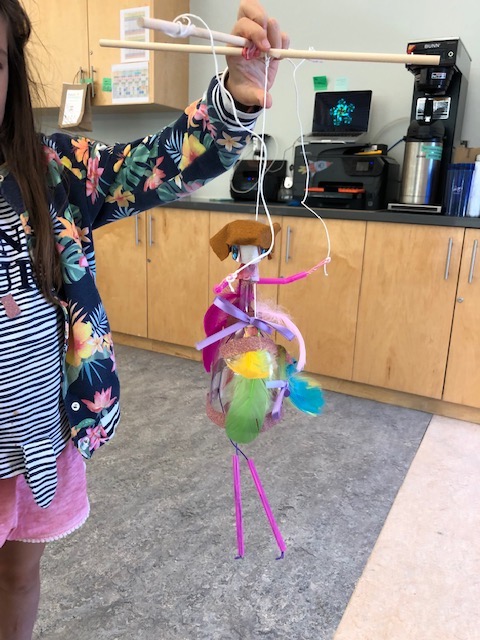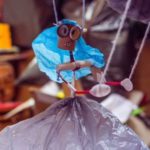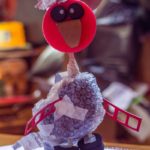Every year (although sadly, perhaps not this year due to COVID-19 travel restrictions), we take a small team to New York City to attend the Broadway Teachers Workshop – where professionals working on Broadway instruct teachers from around the world on the fundamentals of their craft. We’ve taken workshops exploring everything from stage design, wigs and props to theatre curriculum mapping, auditions and improv. and even master choreography classes and play-writing seminars. Last summer, we had the pleasure of working with Danny Miller – the lead puppeteer from the incredible production of King Kong, the musical, then on stage in both Australia and NYC.
Miller took us through the creative process of “Trash Puppets”, a concept he developed in Australia involving puppets made from recycled materials. The group explored the ways in which puppetry may enhance both theatrical and academic experiences with students, covering concepts including sustainability, creativity, problem-solving, team building, inclusivity, performance opportunities and general play.
I left this session feeling incredibly inspired and motivated and returned home to facilitate my own Trash Puppet Workshop with our Wonder Campers last summer. Below are the basic steps I followed for my Trash Puppet experience — I encourage you to look again at the pile currently in your recycling bin and explore this exciting activity at home with the family. Truly – it’s engaging for children (and adults) of any age, and the opportunities to explore the concepts of science, ecology, creativity, art and performance are in ample abundance. Give it a whirl — if this self-proclaimed “neat freak” could do it – so can you!
From our home-workspace to yours, in this time when we’re all trying to figure out what to do with ourselves and our families to stay occupied and engaged, we hope you enjoy this Trash Puppet activity. Post your creations on Instagram and tag us (@exploreitallinc) so we can enjoy with you!
Stay safe and stay healthy — we hope to see you all again in programs very, very soon.
![]()
Trash Puppets
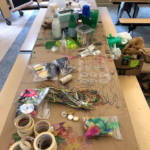 Start with a large amount of clean garbage. Items like egg cartons, berry baskets, clean plastic milk jugs, paper, twist ties, plastic and paper bags, wire, plastic cups, toilet paper or paper towel rolls, boxes large and small, twine and yarn scraps are all excellent places to start. Really — once you open your eyes to the idea of “clean garbage or recyclables”, you’ll be astounded at how much you have on hand.
Start with a large amount of clean garbage. Items like egg cartons, berry baskets, clean plastic milk jugs, paper, twist ties, plastic and paper bags, wire, plastic cups, toilet paper or paper towel rolls, boxes large and small, twine and yarn scraps are all excellent places to start. Really — once you open your eyes to the idea of “clean garbage or recyclables”, you’ll be astounded at how much you have on hand.- Keep all adult tools (scissors, skewers etc.) with the adults or instructors. This is both for safety and to encourage creativity in the group. It’s important to get the puppeteers looking at these found objects in a creative way, re-imagining their natural shapes and purposes.
- Discuss the following concepts – or google them and dig into them together:
- Types of puppets : for our purposes, we encourage you to explore marionettes/string puppets, glove/hand puppets, rod/stick puppets and combo puppets – or those that combine 2 or more of the above. (For a resource, check out Puppet Building World here.)
- Discuss the difference between puppets (moving and manipulated parts) vs. dolls or statues.
- Discuss why someone might want to use a puppet to tell a story.
- Next, get started with the puppet making by making a super-simple example – just ask someone to “lend” you their hand and use plastic bags or paper and masking tape to form a puppet right on their arm. Manipulate it or stuff the bag to form a head and use tape on your helper’s arm and/or fingers to create arms. Add some eyes or other details with some of your materials on hand and watch the magic begin as a puppet comes to life in only a few minutes. Discuss – what it is made of? What is trash and what could be recycled? Give the puppet a name and explore its character a bit to get the creativity flowing.
- Next – get everyone creating their own puppet, encouraging a can-do attitude fueled with positivity, creativity and fun. Some tips for puppet building:
- Build only with masking tape or other ecological materials (no glue guns allowed!) – explain that we use this because it can be recycled.
- When building – if you find yourself struggling, first find a head – either through manipulation of the materials or by designating one object as a head, then build the rest of the puppet around that.
- Remember that puppets do not have to be pretty — it’s about the potential for performance!
- Finally, give the puppets a voice and a name to bring them to life. From here, there is no end to where this project can take you. Some creators will want to take their time, finessing their puppet, whereas others will be ready to explore their characters right away. See where their stories take you and don’t be afraid to play – it’s all about the fun of exploring!
